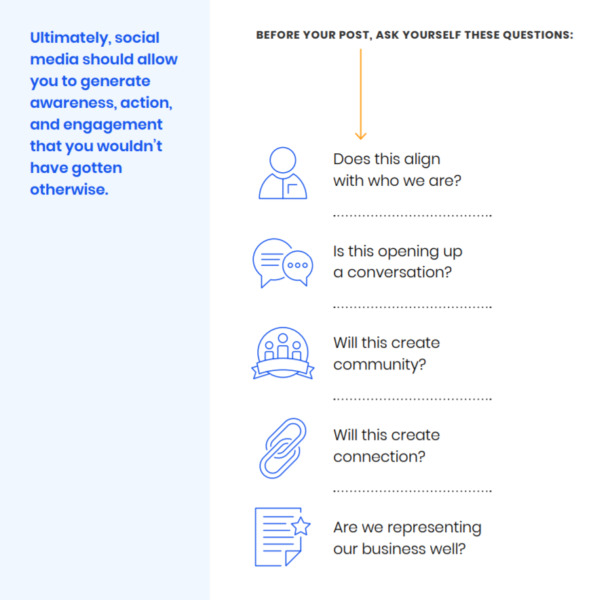
In between diaper changes, tying shoes, storytimes, snacks, and naps, child care business owners and managers are also expected to market their businesses. It’s tempting for small business owners to push marketing to the bottom of the to-do list, especially when you’re busy. But the child care industry is designed to have clients literally outgrow your services. If you don’t continually put effort into attracting new customers, you may not be able to fill your seats.
Even with a tight schedule, it is possible to find time to effectively market your child care or daycare services — with the right planning and tools. Digital child care marketing requires five key elements to be effective. By focusing your efforts on these five key points, you can exceed your marketing goals in a way that doesn’t feel overwhelming.
Increase enrollments and keep families informed with expert advice and all the tools you need, in one place.
1. Create a mobile-responsive website
Parents are busy juggling jobs, children, and everything else in their lives. If they want to connect with you to learn what sets your child care facility apart from the competition, they’ll likely start their research online.
Your website should serve as the hub of your online outreach operation. While a social media presence is important, Facebook or other platforms shouldn’t take the place of a website. Not only can a website help reach prospective new parents, it can also be a place for you to post job openings and upcoming events.
Most importantly, your website needs to be built in a way that makes it easy to navigate on a mobile device. Moms and dads are on the go, and they expect to be able to get their information wherever they are. Look for a mobile-responsive template or a website builder that can be custom-designed, so you don’t have to learn code or hire an expensive tech consultant.
Child care websites should also have at least six pages and include the following:
- Homepage: Think of this as your “front door.” Provide the most important details about your business in a welcoming format that can be skimmed quickly.
- About us page: Go more in-depth about your business. Share your story, philosophy, and mission.
- Programs page: Explain in detail about the services you offer.
- Enrollment page: Provide step-by-step instructions how parents can enroll in your services, give waitlist information, and offer FAQs.
- Careers page: Post job openings and employment information for future team members.
- Contact page: Provide clear, easy instructions on how to reach your business via phone or email.
If you have more than one location, consider having different sections for each site. Enhance your site with multimedia, such as videos for virtual tours of your facilities. Make sure all the images used on your site are high-quality so your site is as visually appealing as it is informative.
2. Use email marketing
Surveys show that direct email marketing is one of the most cost-effective means of marketing a child care or other small business, but your outreach is only as good as your email list.
You likely already have email addresses for your current parents — and if you don’t, start gathering those right away! Your email list can be an asset to your company, helping you create community, share news, and reach new leads through word-of-mouth advertising.
You can even automate the email marketing process so information can be sent on a programmed schedule, even in the middle of recess. In fact, when someone first signs up to receive more information, you can keep their interest by automating an engaging welcome email so you don’t have to worry about spending time manually sending messages.
Effective email marketing means sending a variety of messages and communicating with your list at least once a month. Types of emails you should consider using in your email campaign include:
- Welcome email: Set up an automated “welcome” message that gets delivered immediately when someone signs up for your list. Thank them for signing up and let them know what to expect in the future.
- Invitation to connect: Follow up with another automated email sent a few days later. Ask your readers to follow you on social media or visit your website to learn more about your services.
- Newsletter: A newsletter can be sent at least once a month and is the perfect opportunity to feature promotions or resources parents will find helpful.
3. Don’t get overwhelmed by Social Media
Facebook, Instagram, YouTube, Pinterest, Twitter, LinkedIn, TikTok … it seems like there’s a new social media platform to join every time you turn around. It’s easy to get overwhelmed thinking about the time and energy it would take to maximize every platform. However, strategic marketers know to focus their efforts to get results.
First, you’ll want to make sure that you’ve reserved your business name across all social channels, just in case. But you should then choose a single platform as your primary social media channel and focus the majority of your efforts there. Facebook is a great platform for engaging with parents and likely where you’ll want to put your initial focus.
Facebook can be used to post enrollment ads, job openings, and community engagement posts.
Before you post anything, be sure to ask yourself:
- Does this align with who we are?
- Is this opening a conversation?
- Will this create community?
- Will this create connection?
- Are we representing our business well?
While it’s possible to connect more than one social media platform for easy posting and reposting, it’s not recommended. Colorful, emotion-filled photos are best for Instagram, while helpful blogs highlighting expertise in your industry are better for LinkedIn. Understanding the different personalities of each platform will result in greater engagement from your followers.

Before starting any social media marketing campaign for your child care or daycare business, it’s important to create and distribute a clear, transparent social media policy to your clients. Making sure parents are aware of how photos will be used to market your business can avoid potential privacy concerns down the road.
4. Manage Your Listings and Reviews
Reputation management — including reviews and ratings — is an important part of your online presence, so take directory listing and user review sites seriously.
First, you’ll want to get the facts right. Make sure your business name, address, phone number, and website are accurate on every online listing site, including:
- Google My Business
- Yelp!
- Facebook Business
- Care.com
- Childcare.gov
- Local chambers of commerce
Next, set a reminder or sign up to get notifications whenever someone posts a review of your business. You’ll want to respond to reviews as quickly as possible.
If it’s a positive review, express your thanks. If it’s a negative review, don’t be defensive. Instead, use the opportunity to show future customers your willingness to respond to criticism in a professional manner. Try to rectify the situation. If the person is satisfied with your response, ask them to remove or update their review.




